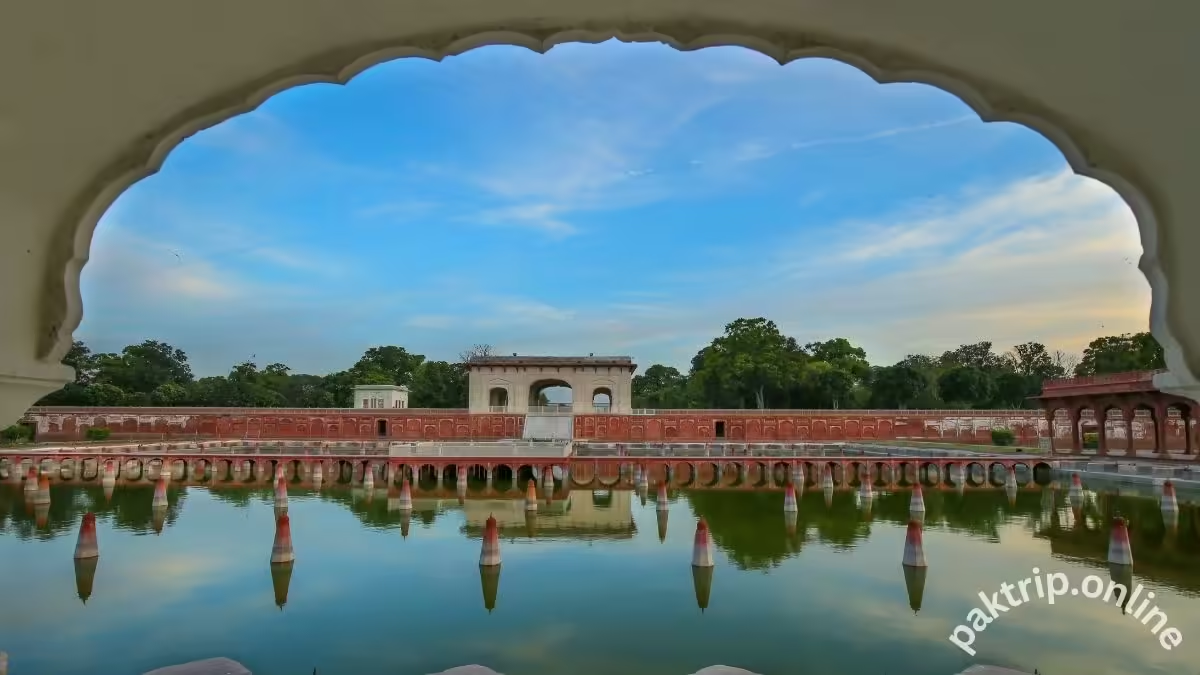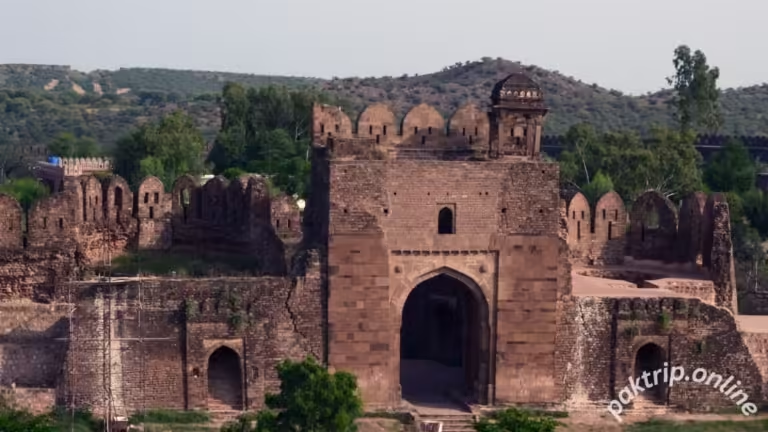Shalimar Bagh Lahore | A Jewel Of Mughal Architecture
Located in Lahore, Shalimar Bagh, also known as Shalimar Gardens, is one of Pakistan’s most magnificent historical sites. Shalimar Bagh Lahore stands as a masterpiece of Mughal architecture, blending lush gardens, intricate waterworks, and beautiful terraces.
Originally constructed during the Mughal era, it is a lasting reminder of the beauty and cultural richness of that time. In this article, we’ll explore the history, architectural design, significance, and much more about Shalimar Bagh.
History of Shalimar Bagh
The Mughal Emperor Shah Jahan, who is renowned for constructing the iconic Taj Mahal, also commissioned the creation of Shalimar Bagh. The garden was built in 1641 and took just over a year to complete, with construction finishing in October 1642. Built as a symbol of beauty and tranquility, the garden is said to have been inspired by Emperor Shah Jahan’s love for his wife, Mumtaz Mahal, although some sources also claim that it was intended as a recreational area for the royal family.
Under the supervision of Khalilullah Khan, a noble of the Mughal court, the construction of Shalimar Bagh was expertly managed. One of the most impressive features of the garden is its advanced water system, which channels water into the garden’s many fountains. The water system is believed to have been fed by a canal, historically called the Shah Nahar, which brought water from Madhopur, India, over many miles to supply the gardens. This hydraulic system was remarkable for its time and provided an enchanting visual effect with numerous fountains.
Layout and Design of Shalimar Bagh
Shalimar Bagh covers an expansive area of about 40 acres and is divided into three main terraces, each with its unique features and purpose:
The Farah Bakhsh Terrace (Bestower of Pleasure): This upper terrace, also known as Farah Bakhsh, is where the royal family often spent time. It was designed to provide an atmosphere of calmness and relaxation. Positioned at the highest elevation, this terrace offers an impressive view of the entire garden.

The Faiz Bakhsh Terrace (Bestower of Goodness): Located at a lower level, the Faiz Bakhsh Terrace serves as the central terrace. It contains the garden’s main fountains, creating a refreshing atmosphere with beautiful waterworks that flow through the terrace. This terrace is adorned with beautiful marble structures, pavilions, and large water tanks, which add to the garden’s charm.
The Hayat Bakhsh Terrace (Bestower of Life): The lowest of the three terraces, Hayat Bakhsh, is equally enchanting and features an intricate network of fountains and greenery. The layout of this terrace was designed to symbolize life and vitality, making it the perfect place for royal gatherings and recreational activities.
Each of these terraces is separated by walls and gardens, and the garden’s height difference adds to its majestic look. The placement of terraces at different levels not only adds beauty but also allows for better water flow, an essential feature of the fountain system.
Architectural Beauty and Significance
Shalimar Bagh is known for its beautiful architecture, which combines Persian and Mughal styles. The garden was designed to represent paradise on earth, featuring a mix of natural and man-made elements. The pathways are lined with flower beds, and various fruit trees are planted, adding vibrant colors and scents to the atmosphere. During its heyday, the garden’s trees included cherry, almond, and orange trees, which offered beautiful blooms in spring and tasty fruits in summer.
One of the garden’s most famous features is its fountain system. The gardens originally had 410 fountains, carefully placed throughout the terraces to create a sense of harmony and peace. These fountains were powered by an innovative hydraulic system, where water would build up in the canals, creating pressure and making the fountains spout water. The water would shoot out of the fountains in rhythmic patterns, giving the garden a musical feel, especially with the sound of water flowing.
The Hydraulic System The water for the fountains came from the Shah Nahar Canal, which was a technical marvel of that time. Engineers used the natural gradient and created an advanced hydraulic system that allowed water to flow to the fountains without any pumps, relying only on gravity. This system is one of the most iconic features of Shalimar Bagh and shows the engineering expertise of the Mughal era.
Shalimar Bagh Lahore Today
Although centuries have passed, Shalimar Bagh Lahore remains a beautiful site and a popular tourist destination. Visitors come from all over Pakistan and the world to experience its historical beauty and peaceful ambiance. In modern times, Shalimar Gardens has been listed as a UNESCO World Heritage site, preserving its cultural significance.
Visitors to Shalimar Bagh can experience not only the beauty of the gardens but also get a glimpse of Mughal culture. The gardens often serve as a spot for photography, picnics, and educational trips. Many schools and colleges bring students here to teach them about Mughal history and architecture. The historical board at the entrance provides a brief history, making it easier for visitors to understand the significance of this site.
Cultural and Historical Significance
Shalimar Bagh is more than just a garden; it is a symbol of the Mughal Empire’s architectural and artistic excellence. The garden represents the Mughals’ appreciation for nature, beauty, and leisure. By building gardens like Shalimar Bagh, Mughal rulers showcased their ability to create spaces that bring peace and tranquility, embodying their vision of paradise.
The garden also reflects the Mughals’ connection with Persian culture. Mughal emperors admired Persian art and architecture, which is evident in the design of Shalimar Bagh. The garden layout, inspired by Persian-style “Charbagh” gardens, is divided into four sections symbolizing the four elements of nature water, fire, earth, and air.
Visiting Shalimar Bagh
Today, Shalimar Gardens is open to the public, and visiting it is a serene experience. For tourists interested in history and culture, the garden is a must-visit spot in Lahore. Walking through the gardens, visitors can imagine the grandeur of the Mughal Empire and how the royals once enjoyed this space.
Best Time to Visit The best time to visit Shalimar Bagh is during the spring and autumn seasons when the weather is mild. Spring is especially beautiful as the garden comes alive with blooming flowers and fresh greenery, enhancing the garden’s natural charm.
Tips for Visitors
Consider visiting in the early morning or late afternoon to stay comfortable and avoid the intense midday heat.
Don’t forget to bring a camera to capture the breathtaking beauty of the garden.
Look out for the informational boards that provide insights into the history and architecture of the garden.
While visiting, make sure to respect the historical site and avoid littering.
Preserving Shalimar Bagh
As a UNESCO World Heritage site, Shalimar Bagh is under preservation efforts to ensure its beauty remains for future generations. Visitors must help in these preservation efforts by following the garden’s rules and respecting its historical significance. Organizations and the government continue to make efforts to restore the gardens, keep the fountains functional, and maintain the original layout of this beautiful site.
Conclusion
Shalimar Bagh is a remarkable piece of Pakistan’s heritage and a stunning example of Mughal architecture and landscaping. Visiting the garden is like stepping back in time to the Mughal era, where nature and architecture come together in perfect harmony. For students, families, and history enthusiasts, Shalimar Bagh is a fantastic place to learn about Lahore’s rich past, the artistry of the Mughals, and the elegance of historic garden design. Whether you’re interested in history, and architecture, or just looking for a beautiful spot to spend the day, Shalimar Bagh Lahore offers an unforgettable experience.







